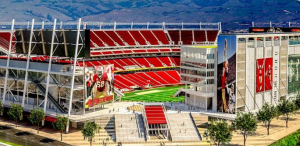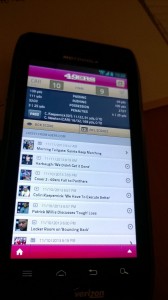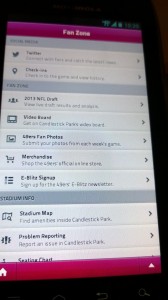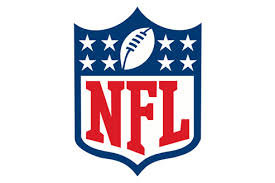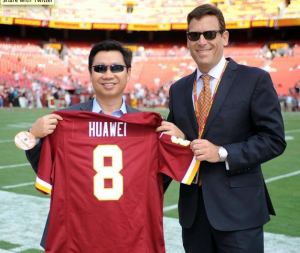
Ming He, Country General Manager for Huawei in the U.S. (left), and Rod Nenner, Vice President of the Washington Redskins (right), pictured together when Huawei announced the team sponsorship and partnership.
Gertz, in the “Inside the Ring” column at the Times, said the Washington team’s senior vice president Tony Wyllie said in an email that “We [Washington] are in the process of deploying a stadium-wide Wi-Fi network working with Verizon and Cisco.” Gertz said the team did not elaborate on why the recent deal with Huawei was apparently scrapped before it got started.
Huawei, which claims to have installed Wi-Fi networks in many stadiums worldwide, had not had any large-scale installations at major U.S. venues before announcing the FedEx Field deal. A major competitor to large U.S. networking firms like Cisco, Huawei has been at the center of controversy in recent years, including being tabbed as a security threat by U.S. government officials, and later as a reported target for N.S.A. surveillance.
Under the announced terms of the deal, Huawei was supposed to install Wi-Fi in suite areas this December; a company spokesman said that while there was no official deal announced, Huawei was also supposed to follow that install up with a full-stadium deployment before the 2015 season started. In the initial announcement, the team announced Huawei Enterprise USA as a multi-year team sponsor and “Official Technology Partner.”
We have got calls and emails in to all the interested parties, and will update this story as we hear more.
